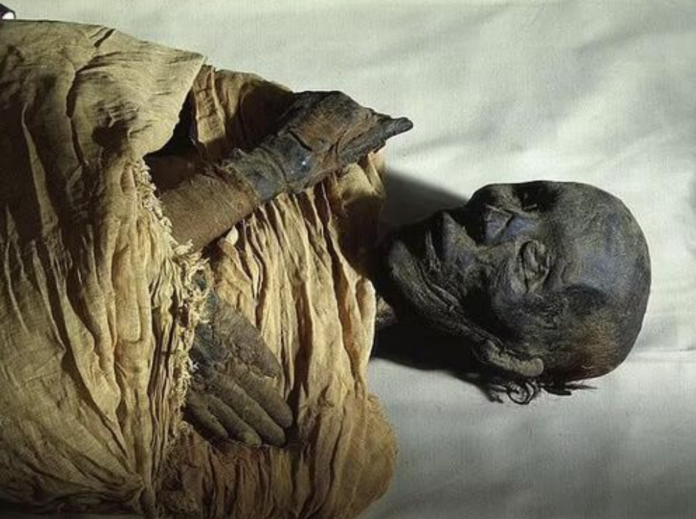Alright, history buffs, grab your metaphorical shovels because we’ve got ourselves a discovery that’s sending shockwaves through the world of Egyptology! More than a century after the legendary uncovering of Tutankhamun’s tomb, British archaeologists have hit the jackpot once again—this time unearthing the long-lost resting place of King Thutmose II, a ruler from Egypt’s 18th dynasty, who lived nearly 3,500 years ago.
The site, officially designated as “Tomb C4”, was found about 1.5 miles west of the famous Valley of the Kings in Luxor. For generations, archaeologists speculated about the location of Thutmose II’s tomb, but a team led by Piers Litherland from the University of Cambridge has finally put the mystery to rest.
And folks, this wasn’t some obvious “X marks the spot” kind of situation—this discovery took patience, expertise, and a bit of old-school Indiana Jones-style exploration.
Litherland and his team first uncovered the entrance in 2022, but it took years of excavation and analysis to confirm what they had on their hands. The tomb itself, hidden beneath a dramatic rock face, had been buried under layers of sand and limestone sediment—likely the result of violent ancient floods that sealed it away for centuries.
It wasn’t until the team cleared the passageway, crawling through a narrow 32-foot corridor, that they finally reached the burial chamber. And that’s when things got “really” interesting.
Inside, remnants of a blue-painted ceiling with yellow stars—a design reserved exclusively for royalty—confirmed that this was indeed the tomb of a king. Fragments of alabaster canopic jars, inscribed with the name of Thutmose II and his famous wife, Hatshepsut, provided further proof. But here’s the catch—there was no mummified body, nor the kind of treasure trove that made Tutankhamun’s tomb so famous.
So, what happened to Thutmose II’s remains? Archaeologists believe his tomb was flooded and later emptied, possibly to protect his body from grave robbers. His mummified remains were actually discovered back in 1881 in a separate burial cache at Deir el-Bahri, but they were in rough shape—his right arm severed, his body looted. Now, for the first time, experts know exactly where his original tomb was “meant” to be.
And get this—there may be “another” tomb out there. Mohsen Kamel, assistant field director of the excavation, hinted that the possibility of a second, intact tomb of Thutmose II is “astonishingly real.” Translation? This discovery might just be the tip of the pyramid (so to speak).
For those wondering how this stacks up to past discoveries, let’s put it in perspective. The last time Luxor saw a royal burial discovery on this scale was back in 1922 when Howard Carter stumbled upon the untouched tomb of Tutankhamun. That find changed the world’s understanding of ancient Egypt forever. While “Tomb C4” may not have the glittering treasures of King Tut’s chamber, its historical significance is enormous—it’s the final missing royal tomb of the 18th dynasty, the golden age of Egyptian civilization.
So, what’s next? Experts will continue analyzing the tomb, searching for clues that might lead them to any missing artifacts—or even a second burial site. One thing’s for sure: ancient Egypt isn’t done surprising us yet.




